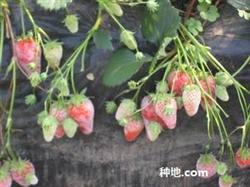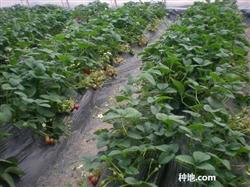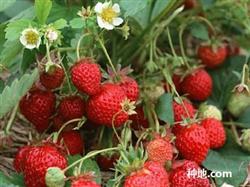How to control strawberry powdery mildew?

How to control strawberry powdery mildew? Please advise that strawberry powdery mildew can be controlled with reference to the following techniques: first, the symptoms are mainly harmful to leaves, flowers, pedicels and fruits, but rarely occur on stolons. At the initial stage of the disease of the leaves, a thin frost-like white powder appeared on the back of the leaves, and then rapidly extended to the whole plant. With the aggravation of the disease, the leaves curled upward in the shape of a spoon, dark stains of different sizes occurred on the leaves, reddish-brown spots appeared in the later stage, the leaf margin began to atrophy, and finally the whole leaf scorched and died. After the buds and flowers become sick, the petals turn red and the buds cannot open. After the fruit is infected with this disease, the fruit surface is covered with white powder, the fruit stops hypertrophy, the coloring becomes worse, and loses its commercial value. Second, the occurrence regularity of powdery mildew overwintered with bacterial remains on the ground or on the old leaves of strawberries and became the source of infection in the following year. When the environmental conditions were suitable in the following spring, the overwintering mycelium produced new conidia, which were transmitted by airflow and carried out primary infection and re-infection of strawberry. On the other hand, strawberries in greenhouse were harmed by last year's residual bacteria, seedlings carrying bacteria and other ways of transmission. The suitable temperature for bacterial infection was 15-20 ℃, and no disease occurred under 5 ℃ and above 35 ℃. Dry and high wet conditions could cause the spread of the disease. However, the pathogenic spores could not germinate in the presence of water droplets. Rainfall can inhibit the spread of spores, while it spreads in large quantities in the afternoon on sunny days. The disease is especially serious in the greenhouse. The disease weight can significantly reduce the fruit yield, at the same time, make the seedling quality worse, and it is not easy to survive after transplanting. Third, the control methods used Baojiao Zaosheng, Hani, all-Star and other varieties with strong resistance to powdery mildew. Clear the garden in winter and burn the diseased leaves. Remove the old leaves, diseased leaves and diseased fruits on the ground in time, and bury them deeply. Attention should be paid to the ventilation of the garden and timely drainage after rain. 5000 times of Teflon can be sprayed at the initial stage of the disease, and tetraflurane and sulfur suspensions can also be sprayed. The control period can be roughly controlled in the open field before flowering, stolon occurrence period, after planting, and protected cultivation before and after flowering. Click to get more strawberry planting techniques click to get more fruit planting techniques
- Prev

How to manage strawberries after picking?
How to manage strawberries after picking? Please guide the management of strawberries after picking: during the peak period of de-stolon stolon, pick the stolon every 20 days or so for 3 or 4 times in a row. In order to reduce the occurrence of stolons and increase the number of flower buds, all the old leaves above ground should be removed after fruit picking.
- Next

How to make strawberries safely through the summer?
How to make strawberries safely through the summer? Please guide the following ways to make strawberries safe through the summer: irrigation and moisturizing, shading and cooling. Strawberry has shallow root system, weak drought resistance, large leaf area and exuberant evaporation. If strawberry is not watered frequently to keep soil moist, it is easy to cause stem and leaf withering and death. So the local face is white.
Related
- Moge, come on! The staff of the peasant association in the producing area of cantaloupe were frightened when the crowd gathered.
- Causes and Solutions of low Fruit setting rate of Apple
- Symptoms and control measures of passion fruit virus disease
- Fruit growing lesson: how do apple orchards keep high yields?
- Can you build orchards in the mountains? What are the pros and cons?
- How to manage the coloring period of Crisson grape?
- This paper introduces the processing technology of two kinds of fig products.
- How much is a month for retired teachers in rural areas by 2020?
- How can strawberry planting increase sugar content? We should pay attention to management in many aspects.
- What are the cultivation techniques on how to improve the yield of golden fruit?

